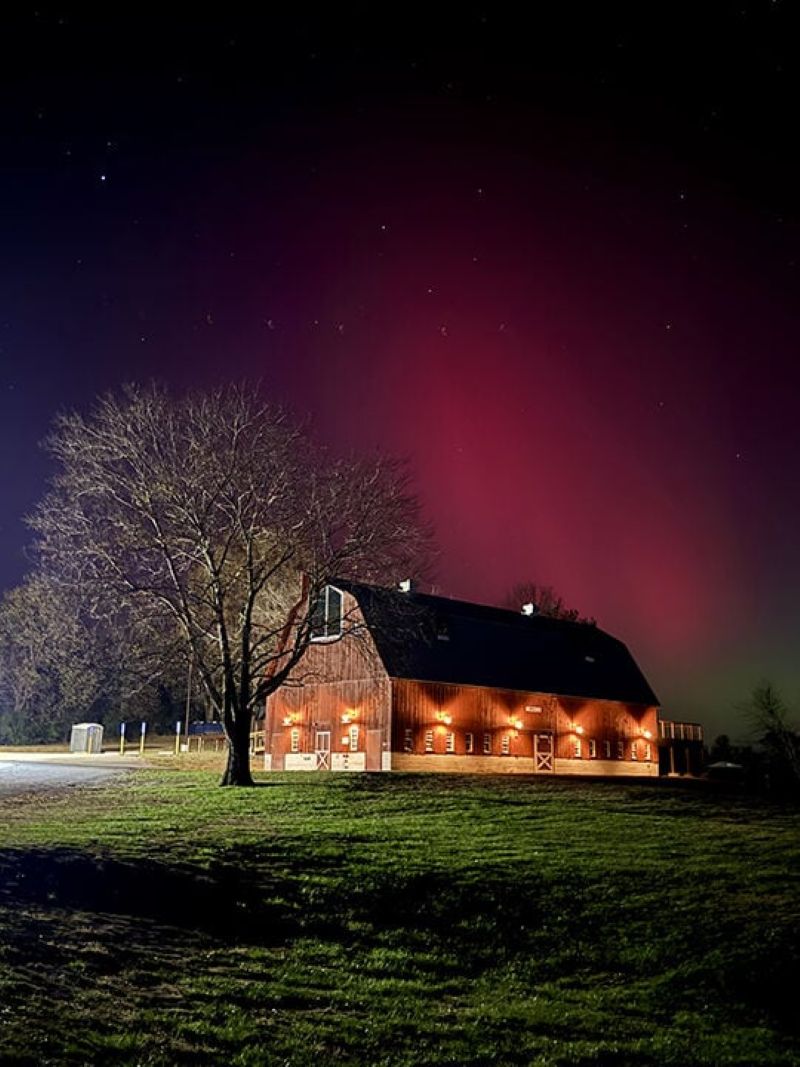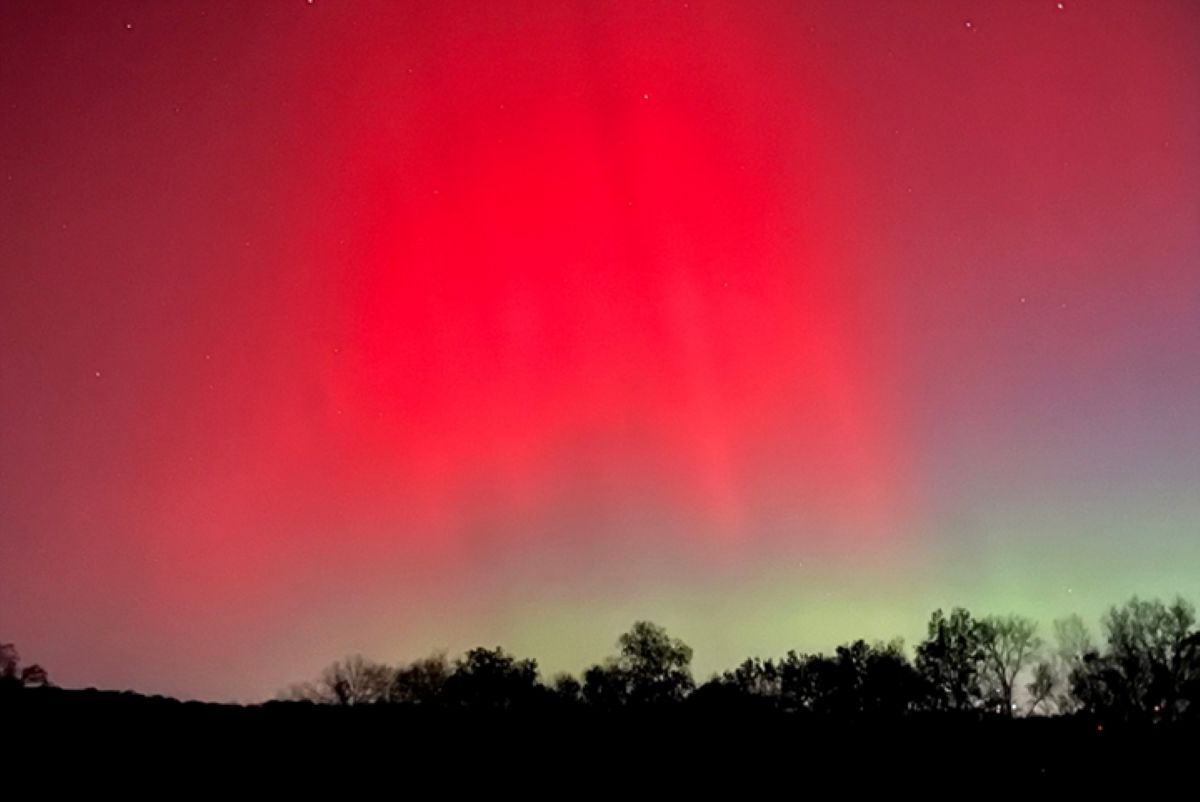Experience the northern lights tonight, a breathtaking natural light show painting the sky with vibrant colors. This magical aurora borealis occurs when solar particles collide with Earth’s atmosphere, creating glowing waves that dance across the northern skies. Tonight’s display promises unmatched beauty and visibility in key regions. Whether you’re a seasoned viewer or catching this wonder for the first time, prepare to be captivated by nature’s neon masterpiece illuminating the night.

Introduction
Looking up at the night sky, many dream of witnessing the dazzling spectacle of the northern lights—also known as the aurora borealis. Tonight, this natural phenomenon is making headlines and lighting up imaginations across the country. The reason? We’re in the midst of a solar maximum, a rare period of heightened solar activity that amps up the brilliance and visibility of the aurora across North America and beyond.
During these thrilling moments, charged particles from the sun dance with our atmosphere, painting the sky in surreal waves of green, pink, purple, and red. Social media is flooded with stunning aurora photos, and news outlets are reporting increased chances to catch the northern lights even in places where they’re seldom visible, like Colorado, Illinois, and Ohio.
As solar storms and geomagnetic activity peak, 2025 has quickly become a banner year for the aurora borealis. Whether you’re a seasoned aurora chaser or hoping to witness these lights for the very first time, tonight’s show promises to be one of the most magical of the decade. Get ready to experience nature’s neon masterpiece—tonight’s aurora is a trending event you won’t want to miss.
What Are the Northern Lights?
Nature’s Spectacular Light Show
The northern lights, or aurora borealis, are one of the most awe-inspiring natural wonders visible in the night sky. These shifting waves of color—most often green, but sometimes pink, purple, or red—stretch across the horizon in curtains and arcs, lighting up the darkness with ethereal beauty.
How Do the Northern Lights Occur?
At the heart of this phenomenon are charged particles from the sun, released during solar storms and solar flares. These particles travel millions of miles before they reach Earth, encountering our planet’s magnetic field. Most particles are redirected, but some spiral down toward the magnetic poles, where they collide with gases high in our atmosphere. When these high-energy collisions happen, atoms like oxygen and nitrogen get excited—essentially heating up and producing light in different colors.
Why Are the Lights Brighter During Geomagnetic Storms or Solar Flares?
Geomagnetic storms and solar flares—bursts of intense energy from the sun—increase the flow of charged particles toward Earth. This means more particles interact with our atmosphere, which often results in stronger, more frequent, and widespread aurora displays. These events stretch the aurora’s reach, sometimes allowing people in states like Colorado, Ohio, or Illinois to witness the lights—an occurrence that’s rare during quieter solar periods.
Aurora Colors Explained
The classic green aurora is produced when solar particles hit oxygen at lower altitudes. Red hues appear at higher altitudes with energetic oxygen interactions, while shades of blue and purple come from collisions with nitrogen. The variety in color and movement is why each aurora display feels unique and magical to viewers across the world.
As you marvel at the celestial dance of the northern lights tonight, you might also be interested in other fascinating space phenomena. Explore more about Earth’s near-space companions in our detailed blog, The Mystery of Asteroid 2025 PN7: Earth’s Quasi-Moon, to deepen your cosmic curiosity.
Why Tonight Is Special
Aurora Borealis Forecast for Tonight
Tonight is shaping up to be an exceptional night for aurora viewing due to increased solar activity amplifying the northern lights’ visibility across many regions. According to the latest forecasts, places like Chicago, Colorado, Indiana, and Utah are expected to have favorable conditions for spotting the aurora borealis. This heightened visibility is due to a surge in geomagnetic activity, often triggered by solar storms that send more charged particles toward Earth’s atmosphere.
Real-Time Updates You Should Know
Real-time data from NOAA (National Oceanic and Atmospheric Administration) provides a precise aurora forecast using the KP index, a scale that measures geomagnetic activity on a scale from 0 to 9. A KP index of 5 or higher typically indicates good aurora visibility further south than usual, making tonight a prime opportunity for many more people to experience this natural spectacle. The best viewing times are generally between late evening and early morning hours, often starting just after sunset and lasting until just before dawn. Depending on your location, face north or look toward the northern horizon for the most vibrant displays.
How to Use This Information
Stay updated by checking live aurora tracking maps and forecasts before heading out. Using the NOAA space weather prediction center or reliable apps can help you know exactly when and where the northern lights will be most visible tonight. For those in southern regions, it’s a rare chance to witness the lights, so consider planning your evening accordingly and getting outside during peak hours for the best chance to catch this mesmerizing event.
When and Where to Watch
Best Places to See the Northern Lights Tonight
Tonight’s aurora borealis will be visible in several key locations across North America where geomagnetic activity is peaking. Cities and states such as Chicago (Illinois), Denver (Colorado), Indianapolis (Indiana), Salt Lake City (Utah), Minneapolis (Minnesota), and even some northern parts of Ohio and Wisconsin are expected to have excellent viewing opportunities. If you are in these areas, look for places away from city lights—such as parks, open fields, or rural outskirts—to get the clearest view of the glowing sky.
For those in southern or less typical aurora-viewing areas, it’s still worth staying up late and finding dark spots facing north where the lights might reach during intensified geomagnetic storms.
How to Track Aurora Activity with Online Maps and Alerts
To maximize your chances of catching the northern lights, use real-time online aurora maps and space weather alerts. Websites like NOAA’s Space Weather Prediction Center provide live KP index readings and aurora forecasts by region. Additionally, apps such as Aurora Forecast, Space Weather Live, and Aurora Alerts send notifications when aurora activity is high in your area.
These tools allow you to predict the best viewing times and identify precisely where the aurora will be visible tonight. Staying tuned to these forecasts means you won’t miss out, especially during these rare geomagnetic storms that push the northern lights farther south than usual.
For the most accurate and up-to-date information on northern lights tonight, check out the real-time aurora forecasts at Aurora Forecast. This trusted source provides live updates on aurora visibility, KP index, and regional forecasts to help you plan your perfect viewing experience.
Tips for the Best Viewing Experience
Ideal Timing and Outdoor Tips
To catch the northern lights at their best, aim to be outside during peak aurora hours—usually between 10 PM and 2 AM, although the activity can start just after dusk and continue until dawn. Find a dark, open area with little to no light pollution, such as a rural park, lakeside, or elevated viewpoint facing north. Dress warmly with layers since you’ll likely be standing under the cold night sky for an extended period. Bring a comfortable chair or blanket, and avoid using bright lights or phone screens to keep your eyes adjusted to the darkness.
Camera Settings for Aurora Photography
If you want to capture the northern lights, use a DSLR or mirrorless camera with manual settings. Set your lens to the widest aperture (f/2.8 or lower if possible), use a high ISO (800–3200 depending on your camera), and choose a shutter speed between 5 and 30 seconds to catch the vibrant light trails. Use a sturdy tripod to avoid blur, and consider a remote shutter or timer to minimize vibration. Experiment with focus by manually setting it to infinity or focusing on a distant light. Remember, every aurora display is unique, so take multiple shots to get the perfect photo.
Safety Precautions
Be aware of your surroundings, especially in remote or unfamiliar locations. Inform someone of your plans and estimated return time, carry a flashlight with a red filter or low light setting, and keep your phone charged. Dress appropriately for cold weather and be cautious of icy or uneven terrain.
How Long Northern Lights Last and What Makes This Night Unique
The duration of a northern lights display varies greatly—from a few minutes of shimmering light to several hours of complex, flowing shapes. Tonight stands out due to a significant geomagnetic storm intensifying the aurora, making it brighter and visible much further south than usual. This rare alignment of solar activity means even viewers in lower latitudes have a higher chance to witness the magic, making it one of the prime nights to experience this natural spectacle during the current solar cycle.
Share Your Experience
Sharing your northern lights experience helps build a vibrant community of aurora enthusiasts and lets others join in the magic. After witnessing tonight’s spectacle, be sure to capture your best photos and videos and share them on social media. Use popular and trending hashtags like #northernlights, #auroraborealis, #aurora, #northernlightsphotos, and #chasingthenorthernlights to ensure your posts reach a wide audience and connect with fellow sky watchers.
Don’t forget to tag the blog’s social media handle (insert your blog’s handle here) and drop a comment below the blog post to tell your story. Whether it’s the colors you saw, the emotions you felt, or the tips that worked best for you, your shared experience can inspire and guide others planning to witness future auroras.
To stay in the loop for the next spectacular display, subscribe to our newsletter for instant aurora alerts, expert travel guides, and photography tips. By joining our community, you can receive real-time updates and be the first to know when the northern lights return to paint the skies again, ensuring you never miss a chance to see this natural wonder.
Call to Action
Don’t miss out on future breathtaking displays of the northern lights! Sign up for our newsletter to receive instant aurora alerts, expert travel guides, and photography tips directly to your inbox. By subscribing, you’ll always be the first to know when the aurora borealis is lighting up the sky, no matter where you are.
To enhance your northern lights experience, download a free aurora tracking app like Hello Aurora or My Aurora Forecast & Alerts. These apps provide real-time updates, personalized notifications, and live aurora maps to help you chase the lights with confidence and ease. Join a vibrant community of aurora enthusiasts, share your sightings, and never miss a chance to witness one of nature’s most magical shows.
Get ready for your next adventure and stay connected—sign up now and download your aurora tracking app today!
Conclusion
Witnessing the northern lights tonight is truly an unforgettable experience—nature’s own light show above the world. The combination of heightened solar activity and clear, dark skies makes this moment extra special for anyone lucky enough to see these shimmering waves of color. Whether you caught a glimpse or captured beautiful photos, you’ve been part of a rare and magical phenomenon that connects us all to the cosmos.
Spread the excitement by sharing your experience with friends and family, and inspire others to embark on their own aurora adventures. If you’ve never planned a northern lights journey before, now is the perfect time to start. Winter months and locations closer to the poles offer extraordinary chances to see the auroras, while apps and alerts will keep you ready for the next show. Keep chasing the lights, stay curious, and let tonight’s dazzling display be the start of many more incredible aurora moments in your life. The northern lights are waiting—will you be there to see them again?


Leave a Reply